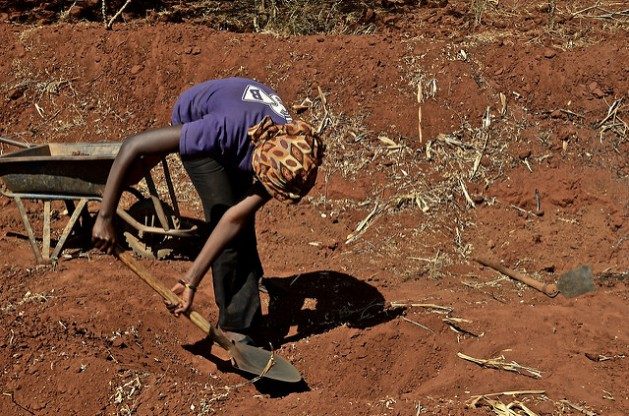Restoring Ecosystems After Fire and Flooding: Forget Not the Beneficial Soil Microbes

ILLINOIS, United States, Oct 01 (IPS) - Recent months have brought all sorts of climate-linked disasters, from raging wildfires in California and Oregon to flooding in Alabama. As we think of the incalculable losses that are associated with these extremities linked to the changing climate, I cannot help but think of the belowground web of life that is burning, being flooded and washed away, affected, or lost.
Indeed, these climate-linked disasters present a less obvious challenge: they are robbing us of the same allies that are supposed to help us in fighting climate change: the allies are the beneficial soil microbes and the complex network of microorganisms inhabiting the soil, referred to as the soil microbiome.
Unseen to the naked eye, the soil microbiome comprises of a web of microscopic life that includes trillions of bacteria, fungi, archaea, viruses, protozoa and fungi. Research has shown that they teem in the soil near the roots of plants.
A growing body of scientific research has generated the evidence of the many benefits that are derived from the associations among microbes and crops such as corn, tomato, cotton and bell peppers. These benefits include improving soil health, promoting plant growth, improving plants ability to absorb nutrients and enhancing the ability of plants to fight stressors such as flooding and extreme heat, and fending off attacking insects.
Moreover, recent reviews continue to demonstrate the many microbe conferred benefits while pointing to outstanding research questions that remain to be explored, to further facilitate the use of beneficial soil microbes in agriculture.
These important microorganisms are suffering in the current slew of disasters. For instance, what does fire do to microorganisms? According to research, fire alters the abundance, composition, and activity of both microbial and fungal communities.
The survivors of fire are left with a fundamentally different habitat. Depending on the conditions after fires, life can bounce back quickly, or that would be the end of it. And without a healthy and functional soil microbial community, the nutrients are not recycled, and insect pests can invade plants. Moreover, in the end, soils lacking these helpers become unhealthy.
Given all the devastation these climate crises are creating, concern about microorganisms is low on people's lists. Indeed, understandably, humans tend to only care about visible things. We are yet to learn about losses of things unseen to the naked eye.
Yet, this web of microscopic life is no minor matter: its healing will provide the foundation for the recovery of ecosystems including agricultural ecosystems. We must be sure to address it in the coming months of recovery.
Importantly, there is need for more research to uncover the impact of fire and flooding on beneficial soil microbe's communities and to further uncover the best approaches and strategies that can be used to help soils to recover from these climate-linked disasters that are projected to happen more frequently in the future.
As we seek to rebuild, we must not forget to incorporate efforts geared at restoring the life below ground. Doing so will help these important microorganisms that live in the soil to bounce back faster and to thrive and then deliver their many benefits.
Dr. Esther Ngumbi is an Assistant Professor at the Entomology Department and African American Studies, University of Illinois at Urbana Champaign. She is a Senior Food security fellow with the Aspen Institute.
© Inter Press Service (2020) — All Rights Reserved. Original source: Inter Press Service
 Global Issues
Global Issues